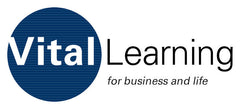Managing Complaints
Managing complaints is not on the top of any manager’s list of favorite activities. Many managers follow the “if I ignore it, it will go away” methodology. Of course, that’s a poor approach to any complaint and a very
counterproductive way to manage those complaints that really do represent significant concerns. Those
concerns, if left unheard and unaddressed, may drag down individual and team performance. Team members need and deserve to be heard. After all, that’s how they know that their manager values their contribution to the team and cares about them as individuals.
Managing Complaints makes clear that when you really listen, you must do so in a way that is non-judgmental. That’s critical because what appears to be a minor issue to you may appear to the complaining employee to be a major problem. When you really problem-solve a complaint, you use specific techniques to identify the potentially serious issues, if any, that underlie the complaint. That’s also critical because many complaints that seem minor actually mask significant issues with broad productivity impact.
Our experience has proven that the best managers are those that have an open-door policy for complaints. They also follow a specific methodology for getting to the root cause of the issue and then finish their process by applying the appropriate problem-solving technique. Using this approach, these skilled managers handle issues before they snowball and require much more time and effort to resolve.
With its focus on listening and problem solving, Managing Complaints can help even experienced managers feel comfortable hanging an “always open” sign on their office door. After all, it’s up to the manager to stay on top of and manage individual and team issues.
Understand why all team
member complaints must be
dealt with rather than ignored or dismissed.
Be more sensitive to all the
problems-major or trivial, real or imagined-that can lie behind complaints.
Understand techniques used to determine underlying problems, which are not always the same as those the team member thinks are responsible for his/her difficulties.
Use various techniques to solve such problems while maintaining a positive relationship with the team member.





